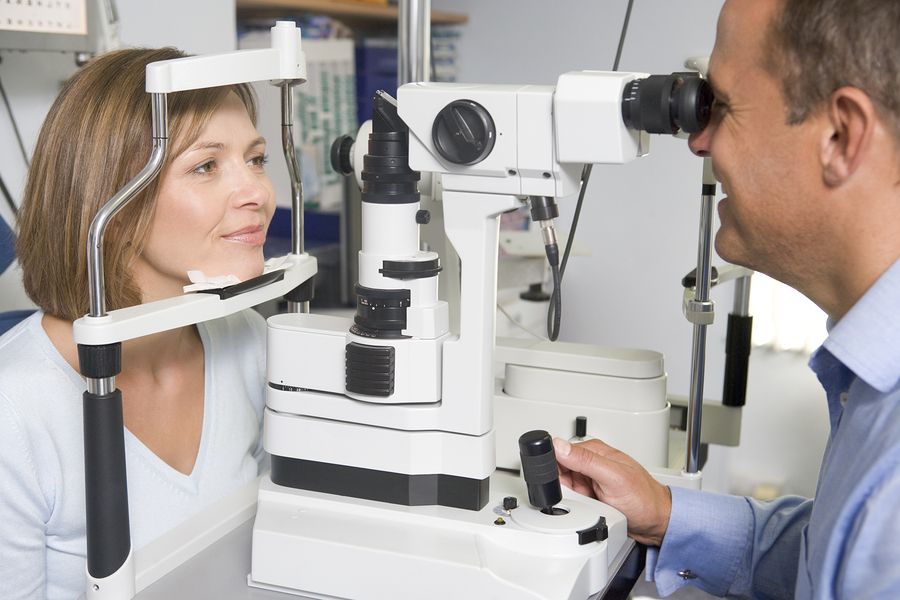Amniotic Membrane Therapy for Ocular Diseases
Introduction
Human amniotic membrane is the innermost layer of the placenta that surrounds the fetus and holds within it the amniotic fluid that protects the fetus within the uterus. It is a special collagenous membrane composed of a single layer of epithelium, a thick basement membrane and a stroma which is avascular. Its importance stems from its ability to reduce inflammation, hasten epithelialization in wound healing along with having antimicrobial properties.
The first use of fetal membranes in ophthalmology is reported to be in the 1940s b y De Roth as a form of a dressing for the management of conjunctival defects. Although not popular at that time, its use in the field of ophthalmology and eye care has grown in the past two decades.1 A study conducted by Baradaran-Rafii et all in 2007 gives an insight to the historical perspective, preparation of the amniotic membrane and its uses in conjunctival and corneal disorders.
y De Roth as a form of a dressing for the management of conjunctival defects. Although not popular at that time, its use in the field of ophthalmology and eye care has grown in the past two decades.1 A study conducted by Baradaran-Rafii et all in 2007 gives an insight to the historical perspective, preparation of the amniotic membrane and its uses in conjunctival and corneal disorders.
How does it help?
Amniotic membrane has an innate property which makes it ideal for the management of corneal and conjunctival disorders as well as wound healing and tissue regeneration in eye care. Amniotic membrane is a collagenous membrane consisting of types I, III, IV, V and VII collagen along with specialized proteins such as glycosaminoglycan, proteoglycans, fibronectin and laminins.
It also contains active growth factors such as epidermal growth factor (EGF), fibroblast growth factors (FGF) and transforming growth factor beta (TGF-B) which promotes and accelerates the process of epithelialization.2 It promotes Epithelial differentiation, facilitates cell migration and prevents apoptosis of epithelial cells.

It properties as an anti-inflammatory, anti-microbial, anti-scarring and anti-fibrosis along with having low immunogenicity and reasonable mechanical properties makes is an ideal candidate for the use in eye care and maintaining the corneal clarity.3 Amniotic membrane can therefore be used as a bandage lens that allows healing and epithelialization to continue beneath it.
What are the indications for Amniotic Membrane Therapy?
Amniotic membrane transplantation (AMT) is surgically used in promoting tissue healing, tissue scarring, reducing inflammation and promoting neovascularization. It can be used as a temporary graft in decreasing inflammation, scarring and promoting wound healing. As a permanent graft it can be used to replace damaged corneal and conjunctival tissues due to some disease process.
As a temporary graft it is used to treat various disease processes. Henrike Westekemper et all demonstrated the use of AMT in treating acute ocular chemical injuries, in which amniotic membrane was transplanted within 6 days of the injury and the results were outstanding with 40% of the patients achieving the best-corrected visual acuity at the end of the treatment.4 Other than this its use has been implicated in treating:
- Neurotrophic keratitis5
- Persistent corneal epithelial defects5
- Steven Johnson syndrome6
- Recurrent corneal erosion5
- Keratoplasty5
- Eyelid fornix reconstruction
The temporary Graft which is the amniotic membrane tissue is mounted on a symblepharon conformer. The Graft is then attached to the damaged portion of the eye with sutures, conformer or fibrin tissue glue. The amniotic membrane which is applied will be absorbed at different rates that depend on the surface area on which it is applied.
Deciding when to remove the amniotic membrane varies from patient to patient and the severity of the case. The amniotic membrane grafts are available commercially in varying thickness depending on the pathology and the duration of time is had to be applied.
AMT can also be used as a permanent graft in order to replace or repair ocular surface tissue caused by disease or trauma, and to promote regeneration of tissue rather than repair of the ocular surface. Since the AM does not itself contain living cells, it promotes growth from surrounding healthy tissue and induces an in growth of healthy tissue. This includes the following disease states:
AMT is also used as a permanent graft to replace or to repair the ocular surface tissue damaged by certain pathologies or trauma, and to promote regeneration of the tissue. Since AMT does not contain living tissue, it promotes the growth of the surrounding healthy tissue and stimulates the in growth of the healthy tissue. Following diseases states are treated with such grafts:
Corneal pathology5:
- Desmetocele
- Bullous keratopathy
- Persistent epithelial Ulcers and defects
- Band Keratopathy
- Neurotophic keratitis
- Removal of scar tissue
Conjunctival Pathology7:
- Pingueculae
- Pterygium (Primary and secondary)
- Conjunctivochalasis
- Superior Limbic Keratoconjunctivitis
- Scars and symlepharon
- Pemphigoid
- Blebs
- Chemical Burns
- Steven Johnson Syndrome

Other Ocular pathologies:
- Fornix reconstruction
- Socket Reconstruction
- Partial Limbal Stem cell deficiency
- Strabismus surgery
- Ischemic injuries
In certain cases AMT has to be performed along with other procedures to ensure successful healing of the ocular tissues. For example a patient with total limbal stem cell deficiency may also require keratolimbal autograft, conjunctival autograft or limbal stem cell transplantation.
In Conclusion use of amniotic membrane can improve the outcome of numerous ocular diseases. It can be used as a temporary graft to promote ocular healing by suppressing inflammation, fibrosis and promoting neovascular growth. As a permanent graft it can replace damaged tissue by providing a substrate to the normal tissue to grow. Further research will add to the list of indications and applications for amniotic membrane therapy.
References
- De Rötth A. Plastic repair of conjunctival defects with fetal membranes. Archives of ophthalmology. 1940 Mar 1;23(3):522-5.
- Tseng SC, Espana EM, Kawakita T, Di Pascuale MA, Li W, He H, Liu TS, Cho TH, Gao YY, Yeh LK, Liu CY. How does amniotic membrane work?. The ocular surface. 2004 Jul 1;2(3):177-87.
- Niknejad H, Peirovi H, Jorjani M, Ahmadiani A, Ghanavi J, Seifalian AM. Properties of the amniotic membrane for potential use in tissue engineering. Eur Cells Mater. 2008;15:88-99.
- Westekemper H, Figueiredo FC, Siah WF, Wagner N, Steuhl KP, Meller D. Clinical outcomes of amniotic membrane transplantation in the management of acute ocular chemical injury. British Journal of Ophthalmology. 2017 Feb 1;101(2):103-7.
- Cheng AM, Chua L, Casas V, Tseng SC. Morselized amniotic membrane tissue for refractory corneal epithelial defects in cicatricial ocular surface diseases. Translational vision science & technology. 2016 May 1;5(3):9-.
- Sharma N, Thenarasun SA, Kaur M, Pushker N, Khanna N, Agarwal T, Vajpayee RB. Adjuvant role of amniotic membrane transplantation in acute ocular Stevens–Johnson syndrome: a randomized control trial. Ophthalmology. 2016 Mar 31;123(3):484-91.
- Tseng SC, Prabhasawat P, Lee SH. Amniotic membrane transplantation for conjunctival surface reconstruction. American journal of ophthalmology. 1997 Dec 1;124(6):765-74.

